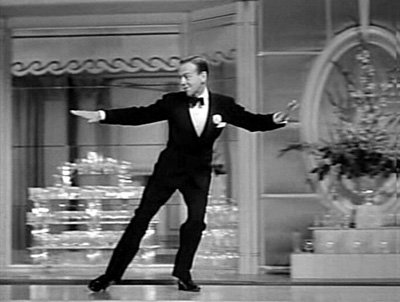
Chomskyan transformational grammar provides a useful framework for a semasiological analysis of the foxtrot.
The foxtrot follows seven transformational rules; three are optional rules that account for certain variations that may occur while dancing at a club or in the studio while choreographing a dance, and four rules are obligatory. One rule involves gender agreement in proper foot choice, and three rules establish the relationship to the foot-placement structure and the slow-rhythm structure.
These few rules generate all the foxtrot steps one can produce: 1. Rhythm Transformation (optional); 2. Chasse Support (optional); 3. Walk Support (optional); 4. Slow-Rhythm Foot Position Junction (obligatory); 5. Gender Agreement (obligatory); 6. Direction/Turning Junction (obligatory); and 7. Foot/Direction Junction (obligatory).
This according to “A phrase-structural analysis of the foxtrot, with transformational rules” by Edward A. Myers (Journal for the anthropological study of human movement I/4 [fall 1981] 246–68; RILM Abstracts of Music Literature 1981-24274).
Above, Fred Astaire and Ginger Rogers; below, a brief documentary.



